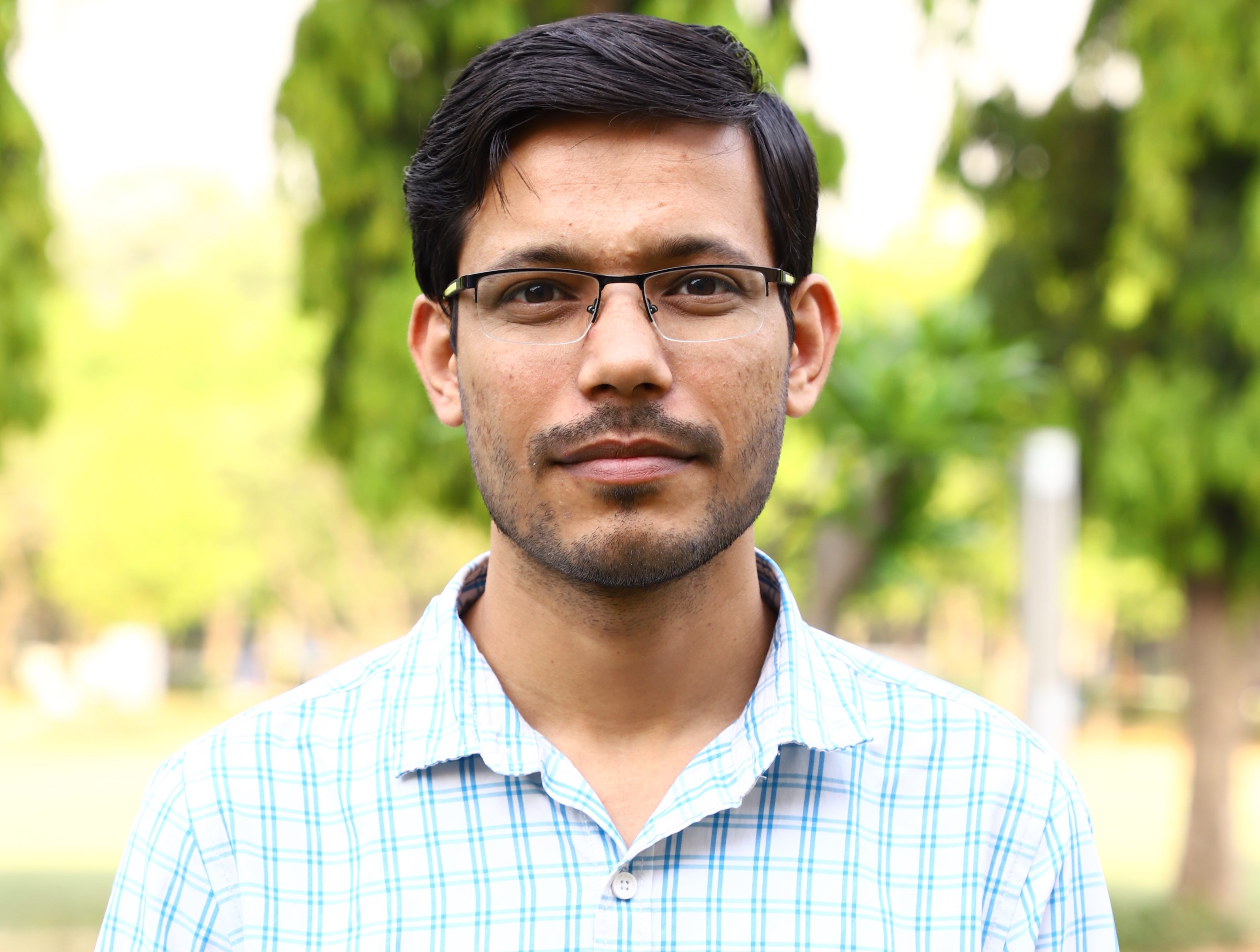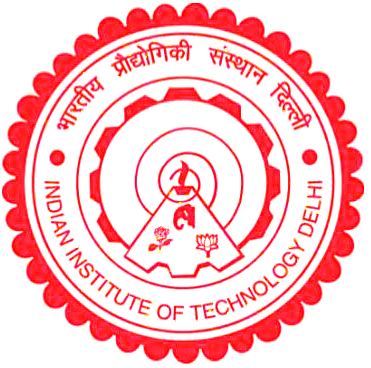PMRF specific webpage
Ravinder Bhattoo [PhD Student, IIT Delhi]

Ravinder works on the mechanics and kinetics of two-dimensional materials. He completed his B.Tech in Civil Engineering from IIT Roorkee. He worked in industry for a year after which joined M3RG, IIT Delhi as a research scholar.
Research Interest
Two-dimensional materials, shock wave effects on materials, dynamic fracture and crack propagationon ballistic impact, ML aided material design, molecular dynamics and peridynamics.
Advisor
Anoop completed his Ph.D. in Civil Engineering from Indian Institute of Science Bangalore in 2015, after which, he worked as a postdoctoral researcher in University of California Los Angeles from 2015 to 2017. In October 2017, he joined IIT Delhi as an Assistant Professor in the Department of Civil Engineering and heads the M3RG.
Courses
| S.No. | Academic Session | Course Name | Credits |
|---|---|---|---|
| 1 | 2017-18 | Solid Mechanics in Structural Engg. | 3.0 |
| 2 | 2017-18 | FEM in Structural Enginnering | 3.0 |
| 3 | 2017-18 | Analytical and Numerical Methods | 3.0 |
| 4 | 2017-18 | Structural Dynamics | 3.0 |
| 5 | 2017-18 | Advanced Structural Analysis | 3.0 |
| 6 | 2017-18 | Concrete Mechanics | 3.0 |
| 7 | 2017-18 | Research Writing | 3.0 |
| 8 | 2017-18 | Engg. Failure Analysis & Prev. | 3.0 |
| 9 | 2018-19 | Selected Topics in IEC-II | 3.0 |
Research Project
Advancement of nanotechnology leads to a new class of low dimensional materials, e.g. zero-dimensional class of quantum dots, one-dimensional class of nanotubes, nano-ribbons and nano-wires, two-dimensional class of single (multi) atom thick nano-sheets and a three- dimensional class of nano-balls and nano-cones. These two-dimensional materials exist in a crystalline form containing defects during manufacturing, e.g. vacancy defects and grain boundaries etc. Even though the effect of defects in two-dimensional materials has studied to an extent, the disordered structure of two-dimensional materials, as well as the role of defects in altering the properties of the two-dimensional materials, is poorly explored. The aim of work is to utilise molecular dynamics simulations to qualitatively as well as quantitatively identify the role of disorder in altering the mechanical properties of two-dimensional materials. The work is of much relevance not only for a better understanding of the stability and structure of two-dimensional materials but this will also lead to defect-engineering of two-dimensional materials for targeted mechanical properties such as bending rigidity, elastic modulus, fracture energy and plasticity etc.
Awards:
- SERB Travel grant (2019)
- ICG-GOMD 2019 registration grant (2019)
- Prime Ministers Research Fellowship (PMRF)
- SITARE/SRISTI Gandhian Young Technological Innovation (GYTI) Awards/Appreciations (2020) for PyGGi
Publications
-
Artificial intelligence and machine learning in glass science and technology: 21 challenges for the 21st century.
R Ravinder, Vineeth Venugopal, Suresh Bishnoi, Sourabh Singh, Mohd Zaki, Hargun Singh Grover, Mathieu Bauchy, Manish Agarwal and NM Anoop Krishnan.
International Journal of Applied Glass Science, 2021 -
Revealing the Compositional Control of Electrical, Mechanical, Optical, and Physical Properties of Inorganic Glasses.
R Ravinder, Suresh Bishnoi, Mohd Zaki and NM Krishnan.
arXiv preprint arXiv:2103.12050, 2021 -
Scalable Gaussian processes for predicting the optical, physical, thermal, and mechanical properties of inorganic glasses with large datasets.
Suresh Bishnoi, R Ravinder, Hargun Singh Grover, Hariprasad Kodamana and NM Anoop Krishnan.
Materials Advances, 2021 -
Unveiling the Glass Veil: Elucidating the Optical Properties in Glasses with Interpretable Machine Learning.
Mohd Zaki, Vineeth Venugopal, R Ravinder, Suresh Bishnoi, Sourabh Kumar Singh, Amarnath R Allu and NM Krishnan.
arXiv preprint arXiv:2103.03633, 2021 -
A Peridynamics-Based Micromechanical Modeling Approach for Random Heterogeneous Structural Materials.
Sumeru Nayak, R Ravinder, NM Krishnan and Sumanta Das.
Materials, 2020 -
An Adaptive, Interacting, Cluster-Based Model Accurately Predicts the Transmission Dynamics of COVID-19.
R Ravinder, Sourabh Singh, Suresh Bishnoi, Amreen Jan, Abhinav Sinha, Amit Sharma, Hariprasad Kodamana and NM Anoop Krishnan.
medRxiv, 2020 -
An adaptive, interacting, cluster-based model for predicting the transmission dynamics of COVID-19.
R Ravinder, Sourabh Singh, Suresh Bishnoi, Amreen Jan, Amit Sharma, Hariprasad Kodamana and NM Anoop Krishnan.
Heliyon, 2020 -
Cooling rate effects on the structure of 45S5 bioglass: Insights from experiments and simulations.
['P Bhaskar', 'R Kumar', 'Y Maurya', 'R Ravinder'].
, -
Deep learning aided rational design of oxide glasses.
['R Ravinder', 'KH Sridhara', 'S Bishnoi', 'HS Grover'].
, -
Hexagonal Boron Nitride: Glass Transition and Crystallization in Hexagonal Boron Nitride: Crucial Role of Orientational Order (Adv. Theory Simul. 2/2020).
R Ravinder, Prateet Garg and NM Anoop Krishnan.
Advanced Theory and Simulations, 2020 -
Irradiation‐induced brittle‐to‐ductile transition in α‐quartz.
R Ravinder, Abhishek Kumar, Rajesh Kumar, Prashanth Vangla and NM Anoop Krishnan.
Journal of the American Ceramic Society, 2020 -
Scalable Gaussian Processes for Predicting the Properties of Inorganic Glasses with Large Datasets.
Suresh Bishnoi, R Ravinder, Hargun Singh, Hariprasad Kodamana and NM Krishnan.
arXiv preprint arXiv:2007.02795, 2020 -
Density–stiffness scaling in minerals upon disordering: Irradiation vs. vitrification.
['NMA Krishnan', 'R Ravinder', 'R Kumar', 'Y Le Pape'].
, -
Designing Functional Glasses using Machine Learning.
R Ravinder, Suresh Bishnoi, Sourabh Singh, Hargun Singh, Hariprasad Kodamana and NMA Krishnan.
, 2019 -
Glass fracture upon ballistic impact: new insights from peridynamics simulations.
Jared Rivera, Jonathan Berjikian, R Ravinder, Hariprasad Kodamana, Sumanta Das, Naresh Bhatnagar, Mathieu Bauchy and NM Krishnan.
Frontiers in Materials, 2019 -
Glass Transition and Crystallization in Hexagonal Boron Nitride: Crucial Role of Orientational Order.
R Ravinder, Prateet Garg and NM Anoop Krishnan.
Advanced Theory and Simulations, 2019 -
Redox sensitive self-assembling dipeptide for sustained intracellular drug delivery.
['S Dhawan', 'S Ghosh', 'R Ravinder', 'SS Bais'].
,
Research Conference and Workshop
| COMPFLU-2018: 12th International Conference on Complex Fluids and SoftMatter | December 2018 |
| Indian Institute of Technology Roorkee, Roorkee | |
| Poster: Role of topological defects on the rigidity of glassy graphene | |
| Advanced Simulation Methods: DFT, MD and Beyond | March 2019 |
| Indian Institute of Technology Delhi, New Delhi | |
| Tutor: Molecular dynamics workshop 2 | |
| Poster: Two-dimensional glass transition in graphene: Insights from molecular simulations | |
| Machine Learning For Engineering Applications (TEQIP Course) | June 2019 |
| Indian Institute of Technology Delhi, New Delhi | |
| Tutor: Introduction to Machine Learning | |
| IIT Delhi Industry Day 2019 | September 2019 |
| Indian Institute of Technology Delhi, New Delhi | |
| Poster: Designing Functional Glasses using Machine Learning | |
| Artificial Intelligence Concepts and Multidisciplinary Applications in ModernBiology | September 2019 |
| International Center for Genetic Engineering and Biotechnology, New Delhi | |
| Tutor: Introduction to Machine Learning Tools. | |
| Material Science and Technology (MST) 2019 | October 2019 |
| Oregon Convocation Center, Portland, USA | |
| Talk: Machine learning to predict the elastic properties of glasses |
